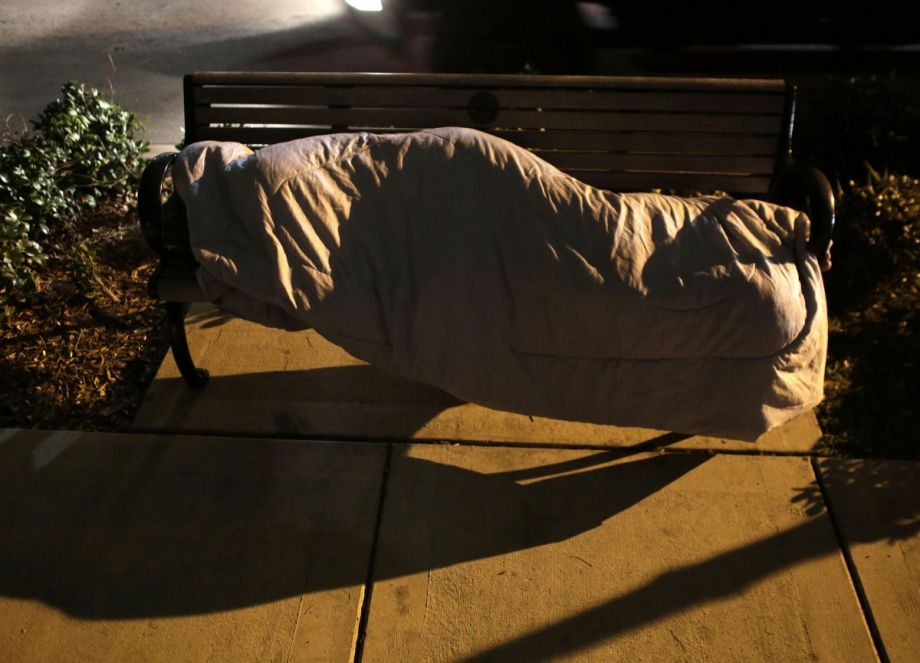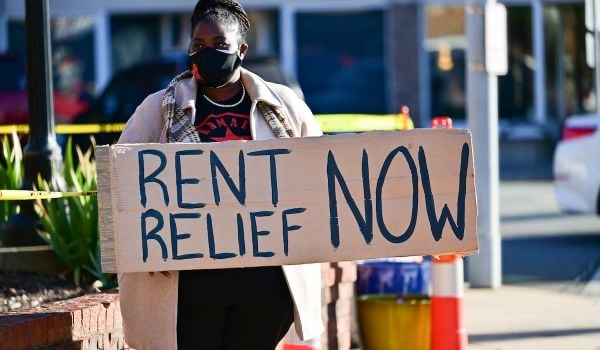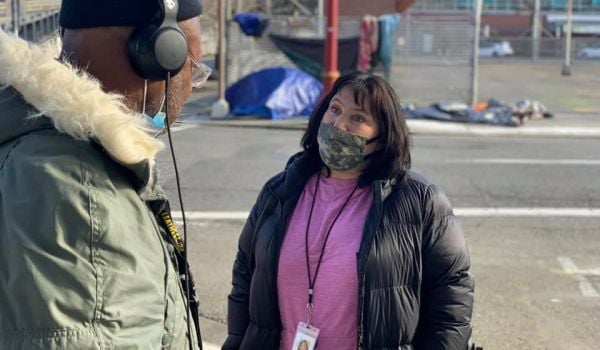Homelessness exacts a high price. Not only do individuals bear the toll of emotional and physical trauma — multiplied by a compounding interest of social isolation — but society also bears the cost of providing emergency services to people without other viable options. Jail stays, drug treatment programs and emergency room visits for homeless individuals cost cities millions of dollars per year, and do little to help. What helps is housing. A new supportive housing facility in Miami is aiming to provide it, and go one step further: Coalition Lift will house 34 chronically homeless men and women, while also conducting research to prove that doing so is far less expensive than leaving them on the streets.
“What we’re trying to do with Coalition Lift is to really identify the highest utilizers of our community’s most expensive systems of care,” says Stephanie Berman, CEO and president of Carrfour Supportive Housing, the nonprofit developer behind Coalition Lift. The $6.5 million project, being developed in partnership with Camillus House and Citrus Health Network, will rehabilitate an abandoned apartment building to create 34 units for extremely low-income, chronically homeless individuals. At the same time, Carrfour will work with the University of South Florida to compare the costs incurred by Coalition Lift residents to those incurred by a control group with similar demographic characteristics who choose not to be housed.
Miami-Dade has reduced the area’s homeless population in the past 25 years, from approximately 8,000 people living without shelter in 1990 to just over 900 people sleeping on the streets today. (About 4,200 people are homeless in total, if those living in shelters and transitional housing are counted.) Most of those left on the streets are chronically homeless, defined as having been unhoused for at least a year and experiencing a disability of some kind. Carrfour already manages 19 other supportive housing communities throughout the county, all of which serve some chronically homeless individuals, but Coalition Lift will be the first to exclusively serve this population.
Coalition Lift residents will receive access to wraparound social services like case management, mental health and substance abuse treatment, employment and educational assistance, financial management training, and primary healthcare. They’ll pay 30 percent of their income in rent, nothing if they have no income. Even though rent won’t be nearly enough to keep the lights on, Berman says it will be far cheaper for Carrfour to fundraise and write grants to cover the costs of supportive housing than it would be to let people remain on the streets. On average she says it costs about $6,000 a year to house someone in a supportive facility. By contrast, she says, a preliminary study suggests some chronically homeless individuals are costing the community $30,000 to $50,000 a year in emergency services.
“We spend a lot of money on crisis care without getting decent outcomes, and so it’s really a foolhardy approach,” says Miami-Dade County Judge Steve Leifman. He founded and leads the 11th Judicial Circuit Criminal Mental Health Project, which seeks to divert people with a mental illness or an addiction from jail to treatment programs. Mental illness and chronic homelessness often overlap. “The key to recovery for anybody, particularly those with mental illnesses, you need housing immediately,” says Leifman. “If you don’t have housing, you’re not going to be incentivized to want to get better, you’re not going to take your medication, you’re going to be at a higher risk for arrest. So it’s critically important that this population gets housed.”
In its 15 years of operation, the Criminal Mental Health Project has proven instrumental in creating better outcomes for mentally ill people caught up in the criminal justice system — and in reducing costs to taxpayers. Leifman says the county was spending $218,000 a day, $80 million a year to “warehouse people with mental illness in our jails.” A study conducted by the group, again with the University of South Florida, showed that over a five-year period just 97 frequently arrested individuals with a mental illness — the majority of whom were homeless — were arrested 2,200 times, spent a collective 27,000 days in jail and 13,000 days in an emergency room or psychiatric facility, and cost taxpayers $13 million.
“There’s a cost to doing nothing,” he says. “We cannot arrest our way or jail our way out of it. It doesn’t work. It’s just another expense and it often re-traumatizes people who are sick. … We’re better off spending the money more effectively and getting them treated.” The proof is (partially) in the numbers: The program contributed to reducing Miami-Dade’s prison population by nearly 40 percent, and the consequent closure of one jail has saved taxpayers $12 million a year.
Berman is hoping that the data from Coalition Lift will demonstrate to policymakers that the same could be true of the chronically homeless. Myriad studies have shown the costs of chronic homelessness in other communities, and Berman wants to bring the data home to Miami.
“We would hope that decision makers and folks that have access to allocating resources take note of that and really realize that we really as a community need to focus on supportive housing and preventive services, rather than what is happening now, which is being reactive and then trying to put Band-Aids on the problem,” she says. “For a lot of us do-gooders we do it because it’s the right thing to do, but for a lot of folks that’s not effective. In a lot of cases, the cost effectiveness is the most compelling argument.”
Right now, Carrfour is working with the University of South Florida research group to identify Miami’s 150 highest utilizers of community services; they will be randomized to determine which 34 individuals get housed in the new building. Coalition Lift follows a Housing First model: Residents will get their own one-bedroom apartments, where they’ll live independently; they’ll have access to whatever services they need to stay successfully housed. “Our model philosophy of supportive housing is this is very much their home,” says Berman, so the project has very few barriers. Residents can move in with their pets, can live as couples, can drink alcohol — though Carrfour discourages residents from drinking onsite, to protect the sobriety of neighbors in recovery.
Rehabilitation on the former apartment building, which has been vacant for about five years, is just beginning. Berman estimates construction will take four to six months. Once the research program begins, costs incurred by residents and the control group will be tracked for three years.
The Equity Factor is made possible with the support of the Surdna Foundation.
Jen Kinney is a freelance writer and documentary photographer. Her work has also appeared in Philadelphia Magazine, High Country News online, and the Anchorage Press. She is currently a student of radio production at the Salt Institute of Documentary Studies. See her work at jakinney.com.
Follow Jen .(JavaScript must be enabled to view this email address)
















